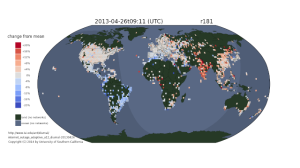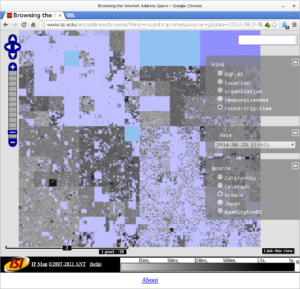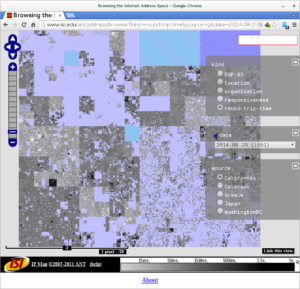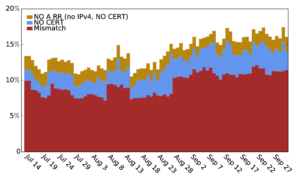John Heidemann gave the talk “Internet Populations (Good and Bad): Measurement, Estimation, and Correlation” at the ICERM Workshop on Cybersecurity at Brown University, Providence, Rhode Island on October 22, 2014. Slides are available at http://www.isi.edu/~johnh/PAPERS/Heidemann14e/.

From the abstract:
Our research studies the Internet’s public face. Since 2006 we have been taking censuses of the Internet address space (pinging all IPv4 addresses) every 3 months. Since 2012 we have studied network outages and events like Hurricane Sandy, using probes of much of the Internet every 11 minutes. Most recently we have evaluated the diurnal Internet, finding countries where most people turn off their computers at night. Finally, we have looked at network reputation, identifying how spam generation correlates with network location, and others have studies multiple measurements of “network reputation”.
A common theme across this work is one must estimate characteristics of the edge of the Internet in spite of noisy measurements and a underlying changes. One also need to compare and correlate these imperfect measurements with other factors (from GDP to telecommunications policies).
How do these applications relate to the mathematics of census taking and measurement, estimation, and correlation? Are there tools we should be using that we aren’t? Do the properties of the Internet suggest new approaches (for example where rapid full enumeration is possible)? Does correlation and estimates of network “badness” help us improve cybersecurity by treating different parts of the network differently?




![Predicting longitude from observed diurnal phase ([Quan14c], figure 14c)](http://ant.isi.edu/blog/wp-content/uploads/2014/10/Quan14c_icon-300x175.png)